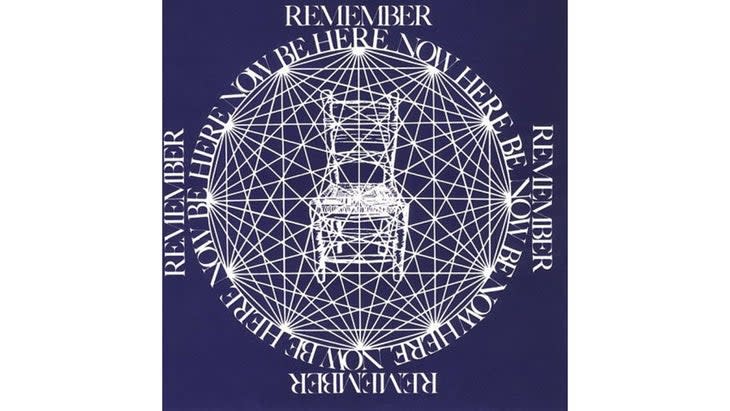‘The Birdsong Project,’ and Everything Else Our Editors Loved in November
This article originally appeared on Outside
Holiday season is here. Outside editors spent November preparing our Holiday Gift Guide, publishing longform features about recovery through psychedelics, what happened to pro skier Angel Collinson, the lives of ski patrollers, and the mystery of the "Man In a Can," and diving into some of our best recent print features on the Outside Podcast. We also immersed ourselves in music inspired by birds, some of the latest streaming series, a film about lava, and a classic text from 70s counter-culture. Here's what we loved this month.
November Featured Pick: For The Birds: The Birdsong Project

There's something uniquely compelling about the space where nature and music meet. Even strumming basic chords on a guitar hits different when you're sitting on a screened porch or by a fire, accompanied by an ensemble of environmental sound. Spend enough time outside, and you'll start to hear musical patterns all around you--perhaps most clearly in birdsongs.
For The Birds: The Birdsong Project, released in installments throughout 2022, brings together 172 pieces of music and 73 works of poetry inspired by birdsong. It is truly an all-genre project, featuring folk, indie rock, hip-hop, classical, experimental, and everything in between. About a dozen of my favorite artists, whose names I never expected to see next to each other, appear on the project. You're sure to be a fan of someone on the list.
Despite the eclectic mix, I was surprised to find that the collection flows naturally. Giving each contributor the same prompt led to a cohesive vibe that made changes in style less jarring. There are many traditionally structured songs with lyrics about birds, and plenty of field recordings and bird samples, of course. But some of the most interesting works feature musicians and producers experimenting, without the added pressure of packaging and selling what they record. While many performing artists lost a primary source of income during the pandemic, they also had an opportunity to slow down and take inspiration from the natural world. It's clear that inspiration made its way into these recordings. Many are peaceful and contemplative, while some are more challenging and thought provoking, and all feel of a time.
The Birdsong Project is not just a compilation of music and poetry, though--it was created to benefit the National Audubon Society and draw attention to the threats birds and bird habitats face. 100% of streaming royalties go to the Audubon Society, and if you buy the 20LP box set (which seems very cool, if you can spare $400), 20% of the cost will go to Audubon. I recommend listening through all five volumes on a sunny weekend. --Jonathan Ver Steegh, digital production manager
What We Read

Be Here Now, by Ram Dass
This month, I read Be Here Now, by Ram Dass, which took me on a delightfully strange journey. After listening to the last track of Jon Hopkins' Music for Psychedelic Therapy--a nine-minute long ambient track with a short meditation read by Dass--enough times for it to earn a place in my top five songs of the year, I ordered a copy of Dass's most famous text. The bulk of the book is printed vertically and comes with line-drawings that range from explicit to psychedelic to simply cute (one of my favorite pages includes a large, detailed drawing of a butterfly). It's his manifesto, equally influenced by Buddhism, Hinduism, Christianity, and large doses of psychoactive drugs, in which he argues for a deeply present, blissed-out way of being. It's fascinating and fantastic, even if you don't ascribe to his beliefs. For spiritual wanderers, artists, poets, musicians, or anyone curious about other realms of existence, this is a worthwhile read. --Abigail Barronian, senior editor
What We Watched
Chefs vs. Wild
In this Hulu original (which Briana Riddock wrote about for Outside a couple months ago), two chefs are each matched with a survivalist and compete to see which pair can forage and then prepare the best elevated (read: bougie) three-course meal. Each team has two to four days to collect oysters, berries, moss, and other wild ingredients, while sleeping in self-made shelters, before they meet in host Kiran Jethwa's outdoor kitchen and cook head to head. The survival aspect is a bit cheesy--we aren't talking about Alone-style 75 days of moose hunting in the snow here--and each chef is given the main protein, whether it be elk ribs or a goose. But it's entertaining to watch the chefs get creative: one chef makes candied mushrooms and another features sea urchins in a dessert. And the shots of crisp lakes and dense Canadian forests make Chefs vs. Wild the perfect palate cleanser after a long day at the office. --Abigail Wise, digital managing director
Fire of Love
The star of this film is lava. Lavas, plural: bubbling, buckling in scales and plates, shooting sky-high, or rolling and steaming underwater; simmering and curling back; shooting up and cascading in clots. Glowing in hummocks or red-and-charcoal flows, lines and lattices. How did they film all this? you keep wondering of the "volcanologists" (a new term on me), the married French scientists Katia and Maurice Krafft, who traveled the world to study and document.
The answer to the above question is that the two went closer and closer to the fire, accepting risk. What in the end killed them reminds me of an aspect of mountaineering. It was not so much what they did that day, but that in spending such a multitude of days out, they were exposed to more possibilities.
I did find some of the film's machinations, like the junk about how they met on a blind date, or maybe they didn’t, slow. I also sometimes found the two--especially Maurice, a big personality--to pull out the schtick. “It’s hard for volcanologists to live together!” he says in an interview. “It’s volcanic! We erupt!” (I loved the quiet, slender Katia, who tilted her head in sincere laughter as he spoke.) The time he goes out in a rubber dinghy in a steaming acid lake seemed ludicrous showboating (sorry), and the film’s claims for how many lives they saved were not substantiated, nor did we receive much of an analysis of the explosion in Japan in 1991 that took them. But the two really loved volcanoes and each other, and strongly raised awareness of evacuation necessity, and I have never seen anything before like the cinematography. I urge anyone to see this film on the big screen. --Alison Osius, senior editor
Ken Block's Electrikhana
As an outdoor journalist, I have very complicated feelings about motorsport. The United States' addiction to the fossil fuel-guzzling personal automobile is both contributing to the ongoing, possibly-terminal climate meltdown and reinforcing the kind of car-first urban design that kills cyclists and pedestrians and disenfranchises anyone who relies on public transportation. On the other hand, fast cars are cool in the most visceral way; they just are. Few people make them look quite as cool as Ken Block, the rally driver and DC Shoes founder who's spun, slid, and jumped a parade of them in his 14-year old video series Gymkhana.
The latest installment in the series, Electrikhana, let me get my hit of adrenaline while giving my guilty conscience a bit of a reprieve. Set in Las Vegas, the nine-and-a-half-minute video is the first one to feature an all-electric car, an Audi S1 e-tron quattro dubbed the Hoonitron. Watching Block pull a reverse entry in front of the Mandalay Bay or turn doughnuts in a casino lobby while a bunch of craps players cheer him on lit up the basest pleasure centers in my brain in a way that few other things can. We may need to imagine a future without the internal combustion engine, but it’s nice to know we don't have to imagine one without this. --Adam Roy, executive editor, Backpacker
The Vow: Season 2
I am a voracious consumer of all pop-culture projects focused on cults and wackadoo religious sects. Yes, I have been busy. In recent years, filmmakers, writers, and podcast producers have served up a dizzying tonnage of content on cults, from Jonestown and Heaven’s Gate, to the Rajneeshpuram sect in northwest Oregon, to Scientology and the Manson Family. One challenge that all cult projects face is trying to explain to the viewer at home how they--a seemingly normal person--might fall under the command of a charismatic guru like David Koresh or L. Ron Hubbard. HBO's recent series, The Vow, accomplishes this better than any project I’ve ever seen.
The Vow charts the rise and fall of the Albany, New York-based cult NXIVM and its cherubic leader Keith Rainere, who in 2019 was convicted on charges of sex trafficking, racketeering, and posession of child pornography. Prosecutors showed how Rainere brainwashed female NXIVM members into becoming kept sex objects of his, and convinced an inner circle of them to brand his initials into their flesh. How, on Earth, does a rational person end up in this situation, especially after so many examples of cults gone wrong? The Vow takes great pains to explain the sometimes decades-long process that followers underwent in NXIVM to get to this point, with grueling and non-judgemental detail.
NXIVM marketed itself as a self-help group, and its Executive Success Program (ESP) attracted tens of thousands of seemingly normal professionals looking for a boost of confidence in their personal and professional lives. The Vow's opening season shows why NXIVM’s tenets were so attractive, and how scores of rational people saw immediate results from adopting its rules on personal development. I found myself nodding while listening to former cult members describe their early experiences with Rainere and NXIVM’s co-founder Nancy Salzman, and thinking to myself that yeah, I probably could have gotten into NXIUM’s preachy philosophies, too. In my eyes, the NXIVM teachings felt like therapy sessions with a good counselor, and were similarly aimed at helping people identify their own emotional responses.
As the series unfolds, directors show how these initial teachings laid the groundwork for some followers to fall under the spell of Rainere and his coterie of deputies, sometimes over the course of years. These unlucky few became those who Rainere abused. Behind the curtain, Rainere steered NXIVM as his personal machine for grooming sex partners and siphoning millions out of their pockets for his own gain. He’s now serving 120 years in federal prison. --Frederick Dreier, articles editor
For exclusive access to all of our fitness, gear, adventure, and travel stories, plus discounts on trips, events, and gear, sign up for Outside+ today.

